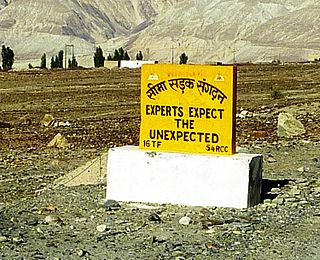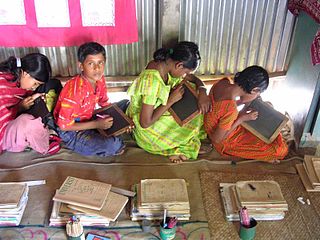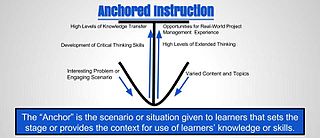
An expert is somebody who has a broad and deep understanding and competence in terms of knowledge, skill and experience through practice and education in a particular field. Informally, an expert is someone widely recognized as a reliable source of technique or skill whose faculty for judging or deciding rightly, justly, or wisely is accorded authority and status by peers or the public in a specific well-distinguished domain. An expert, more generally, is a person with extensive knowledge or ability based on research, experience, or occupation and in a particular area of study. Experts are called in for advice on their respective subject, but they do not always agree on the particulars of a field of study. An expert can be believed, by virtue of credentials, training, education, profession, publication or experience, to have special knowledge of a subject beyond that of the average person, sufficient that others may officially rely upon the individual's opinion on that topic. Historically, an expert was referred to as a sage. The individual was usually a profound thinker distinguished for wisdom and sound judgment.
Instructional design (ID), also known as instructional systems design (ISD), is the practice of systematically designing, developing and delivering instructional materials and experiences, both digital and physical, in a consistent and reliable fashion toward an efficient, effective, appealing, engaging and inspiring acquisition of knowledge. The process consists broadly of determining the state and needs of the learner, defining the end goal of instruction, and creating some "intervention" to assist in the transition. The outcome of this instruction may be directly observable and scientifically measured or completely hidden and assumed. There are many instructional design models but many are based on the ADDIE model with the five phases: analysis, design, development, implementation, and evaluation.

Learning is the process of acquiring new understanding, knowledge, behaviors, skills, values, attitudes, and preferences. The ability to learn is possessed by humans, animals, and some machines; there is also evidence for some kind of learning in certain plants. Some learning is immediate, induced by a single event, but much skill and knowledge accumulate from repeated experiences. The changes induced by learning often last a lifetime, and it is hard to distinguish learned material that seems to be "lost" from that which cannot be retrieved.
Organizational learning is the process of creating, retaining, and transferring knowledge within an organization. An organization improves over time as it gains experience. From this experience, it is able to create knowledge. This knowledge is broad, covering any topic that could better an organization. Examples may include ways to increase production efficiency or to develop beneficial investor relations. Knowledge is created at four different units: individual, group, organizational, and inter organizational.
Instructional scaffolding is the support given to a student by an instructor throughout the learning process. This support is specifically tailored to each student; this instructional approach allows students to experience student-centered learning, which tends to facilitate more efficient learning than teacher-centered learning. This learning process promotes a deeper level of learning than many other common teaching strategies.
Procedural knowledge is the knowledge exercised in the performance of some task. Unlike descriptive knowledge, which involves knowledge of specific facts or propositions, procedural knowledge involves one's ability to do something. A person doesn't need to be able to verbally articulate their procedural knowledge in order for it to count as knowledge, since procedural knowledge requires only knowing how to correctly perform an action or exercise a skill.

Constructivism is a theory in education that recognizes learners construct new understandings and knowledge, integrating with what they already know. This includes knowledge gained prior to entering school. It is associated with various philosophical positions, particularly in epistemology as well as ontology, politics, and ethics. The origin of the theory is also linked to Jean Piaget's theory of cognitive development.
In cognitive psychology, cognitive load refers to the used amount of working memory resources. There are three types of cognitive load: intrinsic cognitive load is the effort associated with a specific topic; extraneous cognitive load refers to the way information or tasks are presented to a learner; and germane cognitive load refers to the work put into creating a permanent store of knowledge.
Ann Lesley Brown (1943–1999) was an educational psychologist who developed methods for teaching children to be better learners. Her interest in the human memory brought Brown to focus on active memory strategies that would help enhance human memory and developmental differences in memory tasks. Her realization that children's learning difficulties often stem from an inability to use metacognitive strategies such as summarizing led to profound advances in educational psychology theory and teaching practices.
An intelligent tutoring system (ITS) is a computer system that aims to provide immediate and customized instruction or feedback to learners, usually without requiring intervention from a human teacher. ITSs have the common goal of enabling learning in a meaningful and effective manner by using a variety of computing technologies. There are many examples of ITSs being used in both formal education and professional settings in which they have demonstrated their capabilities and limitations. There is a close relationship between intelligent tutoring, cognitive learning theories and design; and there is ongoing research to improve the effectiveness of ITS. An ITS typically aims to replicate the demonstrated benefits of one-to-one, personalized tutoring, in contexts where students would otherwise have access to one-to-many instruction from a single teacher, or no teacher at all. ITSs are often designed with the goal of providing access to high quality education to each and every student.
Math wars is the debate over modern mathematics education, textbooks and curricula in the United States that was triggered by the publication in 1989 of the Curriculum and Evaluation Standards for School Mathematics by the National Council of Teachers of Mathematics (NCTM) and subsequent development and widespread adoption of a new generation of mathematics curricula inspired by these standards.
Connected Mathematics is a comprehensive mathematics program intended for U.S. students in grades 6-8. The curriculum design, text materials for students, and supporting resources for teachers were created and have been progressively refined by the Connected Mathematics Project (CMP) at Michigan State University with advice and contributions from many mathematics teachers, curriculum developers, mathematicians, and mathematics education researchers.
Inquiry-based learning is a form of active learning that starts by posing questions, problems or scenarios. It contrasts with traditional education, which generally relies on the teacher presenting facts and their own knowledge about the subject. Inquiry-based learning is often assisted by a facilitator rather than a lecturer. Inquirers will identify and research issues and questions to develop knowledge or solutions. Inquiry-based learning includes problem-based learning, and is generally used in small scale investigations and projects, as well as research. The inquiry-based instruction is principally very closely related to the development and practice of thinking and problem solving skills.
The worked-example effect is a learning effect predicted by cognitive load theory. Specifically, it refers to the learning effect observed when worked examples are used as part of instruction, compared to other instructional techniques such as problem-solving and discovery learning. According to Sweller: "The worked example effect is the best known and most widely studied of the cognitive load effects".
The expertise reversal effect refers to the reversal of the effectiveness of instructional techniques on learners with differing levels of prior knowledge. The primary recommendation that stems from the expertise reversal effect is that instructional design methods need to be adjusted as learners acquire more knowledge in a specific domain. Expertise is described as "the ability to perform fluently in a specific class of tasks."
In education, authentic learning is an instructional approach that allows students to explore, discuss, and meaningfully construct concepts and relationships in contexts that involve real-world problems and projects that are relevant to the learner. It refers to a "wide variety of educational and instructional techniques focused on connecting what students are taught in school to real-world issues, problems, and applications. The basic idea is that students are more likely to be interested in what they are learning, more motivated to learn new concepts and skills, and better prepared to succeed in college, careers, and adulthood if what they are learning mirrors real-life contexts, equips them with practical and useful skills, and addresses topics that are relevant and applicable to their lives outside of school."

The Corporate and Project Management Research Institute is a non-commercial organization working on problems of improving the efficiency of corporate and project management in the Russian Federation. The main goal of the institute is the formation of a Russian national school of corporate and project management by means of consolidating unique Soviet experience, integrating it with international practices and adapting to the modern requirements of the market and the legislation of the Russian Federation.
Design-based learning (DBL), also known as design-based instruction, is an inquiry-based form of learning, or pedagogy, that is based on integration of design thinking and the design process into the classroom at the K-12 and post-secondary levels. Design-based learning environments can be found across many disciplines, including those traditionally associated with design, as well as others not normally considered to be design-related. DBL, as well as project-based learning and problem-based learning, is used to teach 21st century skills such as communication and collaboration and foster deeper learning.

Anchored Instruction is a technology centered learning approach, which falls under the social constructionism paradigm. It is a form of situated learning that emphasizes problem-solving within an integrated learning context, which can be examined from multiple perspectives. "In other words, the learning is contextualized to provide students with realistic roles that serve to enhance the learning process",. During teaching, activities are designed or tied around an "anchor", such as an adventure or story, with a problem at the end, that needs to be resolved. The connection made between the content and the authentic context is referred to as "anchoring". These models typically embed all the information needed for the problem to be solved, such data and hints. Anchored instruction is akin to problem-based learning (P.B.L.) with the exception of its open-endedness.
Michelene (Micki) T. H. Chi is a cognitive and learning scientist known for her work on the development of expertise, benefits of self-explanations, and active learning in the classroom. Chi is the Regents Professor, Dorothy Bray Endowed Professor of Science and Teaching at Arizona State University, where she directs the Learning and Cognition Lab.




